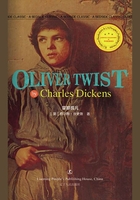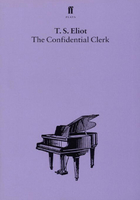THE CALIFORNIA GOLD RUSH
AS WAS HIS habit each morning, James Marshall rose early to walk the gravel bar along his millrace to see if the water was yet deep enough and swift enough to turn the wheel for the sawmill he had built for John Sutter. At the headwater, Marshall closed the sluice gate, then ambled to the lower end and stood at the edge of the race. Ice fringed the shallow pockets against the bank; the deeper pools lay still and crystalline. As Marshall scanned the rocky bottom, in one of the pools, about six inches beneath the surface, he spied a yellow lump sitting on a flat rock. He rolled back his sleeve, reached into the still water, and retrieved the lump. It was about the size and shape of his thumbnail, gold and shiny, but without sparkle. Except for its color, it looked like an old piece of chewed spruce gum.
Marshall stood by the race, turning the lump in his fingers, his breath steaming in white clouds. The lump was small but dense, a curious find among the rounded gray stones of the river. He thought it looked like gold, but he wasn't sure. He tried a simple test: He laid the lump on a smooth rock, picked up another rock, and hit the lump. It did not break, but when he held it up, he saw that it had changed shape. Marshall dropped the lump into his pocket, finished scanning the race, and returned to camp.
That day, one of the crew at the mill recorded in his journal that "James Martial the Boss of the Mill" had found "some kind of mettle in the tail race that looks like goald." To test it, they set the lump on an anvil and beat it with a hammer. Iron pyrite, or fool's gold, would have shattered; Marshall's piece only flattened. Then the cook tossed it into a kettle of lye and boiled it for a day, but the lump emerged with the same shiny, golden cast.
Marshall and his crew had dug the millrace along the south fork of the American River in the far northern reaches of a desolate and obscure territory named by the Spanish "California." The morning Marshall found the lump, January 24, 1848, all of California belonged to Mexico, but Mexico and the United States had been at war, and the two countries were in the final phases of negotiating a treaty under which Mexico would cede "Upper" California to the United States.
Upper California stretched from a point just south of the port at San Diego north to the Oregon Territory. The backbone of the region was a mountain range called the Sierra Nevada. Across the foothills and plains of the Sierra Nevada's western slope lived a diverse, but sparse population cohabiting a space too vast for frequent encounters and too abundant to cause friction: scattered Mexican farmers, a small contingent of U.S. soldiers, a few navy warships, indigenous tribes, the remnants of sporadic Catholic missions, lonely cattle ranchers, trappers still supplying hide ships from back east, and a splintered band of Mormons. The Mormons, 238 of them, had arrived by ship a year and a half earlier and settled at Yerba Buena, an outpost of about 40 inhabitants along the western fringe of an immense bay coming in off the Pacific. When the Mormons renamed the settlement in 1847, Yerba Buena had become "San Francisco."
Perhaps the most prosperous inhabitant of the region was a jovial, twice bankrupted, German-born Swiss, a self-proclaimed "captain," John Augustus Sutter. Sutter had arrived by way of Hawaii and persuaded the Mexican governor of California to deed him fifty thousand fertile acres at the confluence of the American and Sacramento rivers, about a hundred miles northeast of the colony at San Francisco. He named his domain New Helvetia, but others in those parts called it Sutter's Fort. In the fall of 1847, with plans to extend his holdings and needing lumber to do it, Sutter had sent a carpenter named James Marshall fifty miles up the American River to build a sawmill.
Four days after he found the yellow lump in the millrace, and five days before the United States signed the treaty with Mexico, Marshall set out on horseback through the snow for Sutter's Fort. There he pulled Sutter aside and bade him retire to a small room and lock the door. Once they were alone, Marshall unrolled a cotton cloth and displayed the lump; he thought it was gold, but he didn't know. All he knew was that since he had picked up that first nugget a few days earlier, he had found others like it in the millrace, and he hadn't even been looking; they were just lying there. If this was gold, it appeared to be all over the site.
Sutter studied the lump and felt the remarkable weight of such a small piece. Then he pulled an old chemist's reference off his shelf and discovered two more tests to try: He dripped nitric acid onto the lump, which did not mar it; then he placed it on a scale and found it to be far more dense than silver. Sutter concluded that Marshall had indeed found a nugget of gold, but rather than being joyous, he seemed concerned. On his fifty thousand acres, he grazed twelve thousand head of cattle, ten thousand head of sheep, and two thousand horses and mules and kept one thousand pigs. If the lump he now held was gold, he envisioned his ranch hands fleeing into the foothills, leaving the crops in the fields and the stock to fend for itself; he foresaw thousands of crazed miners overrunning his peaceful valley; and being a wily sort, he also realized he did not own the land on which Marshall had found the gold.
Sutter quickly negotiated a deal with the Coloma tribe: food and clothing for a three-year lease of twelve square miles surrounding the mill. With the lease in hand, he then admonished James Marshall and the mill hands to tell no one of the find. But one of the hands began disappearing into the hills on his time off, scratching gold filings out of crevices with a jackknife, and writing to friends of his good fortune. Another bragged in a store about the gold he kept in a buckskin bag, and a wagon driver delivering supplies to the mill met a small boy who showed him a handful of gold dust. Asked by a widening circle to confirm the reports, Sutter himself finally allowed his jovial nature to overrun his guile, and he, too, began to gloat over the gold nuggets and dust found up at his new mill. By the first week of March, as he had predicted, the only field hands who remained at the fort were those physically incapable of leaving.
News of the strike leaked out of the foothills, across the plains, and down the bay to the tiny settlement of San Francisco. On March 15, 1848, the Californian reported "GOLD MINE FOUND." A few weeks later, the rival Star called the story a sham, but that same week, the owner of the Star rode into San Francisco, waving a bottle filled with gold dust and booming that gold had been discovered on the American River: a bit of advertising for the new store he had built next to Sutter's mill. In two weeks, San Francisco's population dropped from a few hundred to about a dozen.
The United States Senate ratified the treaty with Mexico in March, and the Mexican Congress approved it in May. That summer the new United States territorial governor of California toured the gold fields along the American River and found four thousand men digging and panning, each averaging about two ounces, or thirty-two dollars a day. Miners shadowed James Marshall everywhere, squatting next to him streamside, waiting for him to exercise his divine gift. Sutter's leasehold from the Coloma had already been overrun, and although gold was pouring into the stores at his fort, Sutter himself was out harvesting forty thousand bushels of wheat for flour, which had shot to thirty-six dollars a barrel and was expected to go to fifty.
Enclosing a tea canister of nuggets and dust with his missive, the territorial governor wrote to President James K. Polk back in Washington, "I could not bring myself to believe the reports I heard of the wealth of the gold district until I visited it myself. I have no hesitation now in saying there is more gold in the country drained by the Sacramento and San Joaquin Rivers than will pay the cost of the war with Mexico a hundred times over."
WHEN THE WAR ended, the United States government had subsidized private industry to build and operate two fleets of sidewheel steamers to connect the new Territory of California with the rest of the country. One fleet would travel between New York and Panama, the other from Panama up to Oregon with brief stops at outposts in San Diego, Monterey, and San Francisco. Captained by U.S. naval officers, the steamers were to disembark every two weeks, carrying intelligence, mail, newspapers, express freight, and eventually passengers.
The first of the Pacific Mail Fleet, the California departed New York Harbor on October 6, 1848, and headed around Cape Horn to set up service between Panama and Oregon. She sailed almost empty, and the captain expected his maiden voyage from Panama up to Oregon to be about the same. But while the California was rounding Cape Horn and heading up the Pacific, President Polk opened the Second Session of the 30th Congress on December 5, 1848. "The accounts of the abundance of gold in that territory," Polk told Congress, "are of such an extraordinary character as would scarcely command belief were they not corroborated by authentic reports."
The next morning, newspapers ran tall headlines. Horace Greeley, editor of the New York Daily Tribune, predicted that the country was "on the brink of the Age of Gold." "Hope is drawing her thousands of disciples to the new El Dorado," he wrote, "where fortune lies abroad upon the surface of the earth as plentiful as the mud in our streets. The only machinery necessary in the new Gold mines of California is a stout pair of arms, a shovel and a tin pan. Indeed many are fain to put up with a shingle or a bit of board, and dig away quietly in peace of mind, pocketing their fifty or sixty dollars a day and having plenty of leisure."
Every newspaper in the East ran articles about the ease of finding gold in California. How-to books, like the Emigrant's Guide to the Gold Mines, described vast riverbeds "paved with gold to the thickness of a hand," and claimed that "twenty to fifty thousand dollars of gold" could be "picked out almost instantly." Lectures on gold mining drew enormous crowds, and the lecturers added their own hyperbole: that miners in California were finding up to four pounds of gold, or a thousand dollars a day, that one man had found thirty-six pounds in one day, that not even a hundred thousand men could exhaust all of the gold in California if they worked hard at it for ten years.
"In a moment, as it were," wrote the editor of the Hartford Daily Courant, "a desert country that never deserved much notice from the world has become the centre of universal attraction. Fifteen millions have already come into the possession of somebody and all creation is going out there to fill their pockets."
But all creation had only two ways to get to the new territory: They could walk or they could sail. Those choosing to walk would have to wait until April, for between them and California stood the Rocky Mountains, and winter in those mountains first killed the grass, then buried it under feet of snow. Without feed, the pack animals would die.
The impatient ones sailed, but now they had to decide: around Cape Horn or across Panama. The route via Cape Horn was a four- to eight-month journey of thirteen thousand nautical miles that promised the most terrifying storms a landlubber could conjure. In 1833, Charles Darwin described the Horn in his diary: "The sight," he wrote, "is enough to make a landsman dream for a week about death, peril, and shipwreck." Waves eighty to ninety feet tall, the Horn's infamous "greybeards," swept across the ocean at thirty knots and battered ships already encrusted in ice. Spars snapped, sails shredded, and men washed overboard to freeze and drown in an icy sea.
The route across Panama far exceeded the other two for speed and convenience, and the ways to die were less dramatic. The first leg, New York to Panama, took but nine days with a short layover in Havana. Once the passengers arrived, the journey across the isthmus was more vexing than life threatening. Ahead of them were five days in a dugout canoe, on the back of an unpredictable mule, and atop their own sore feet. The trip exposed them to tropical heat, outbreaks of cholera, malaria, and yellow fever, and coffee sweetened by natives chewing sugar cane and spitting into the cup. Then they arrived in the three-hundred-year-old city of Panama, which one American described as a "dirty, noisy, and unpleasant place to stay in." The sun was too hot, the water too noxious to drink, and the native lemonade too "sloppy" to swallow. Here they waited on the docks until a vessel could ferry them up the west coast to San Francisco.
When the California steamed into the Bay of Panama for a brief layover and to take on more coal, her captain looked out upon the docks and saw mountains of old trunks, dirty bedding, rucksacks, ropes, tents, pots, pans, utensils, spades, and pickaxes. The stories of gold in the far reaches of the Union had incited riots at the steamship offices back east. Already, the first Atlantic steamer had arrived on the Caribbean side of Panama filled with passengers. Two days later a bark arrived carrying another sixty. By the middle of January, five other ships had offloaded more passengers to begin the trek upriver and over the mountains to Panama City.
The California had room for 200 passengers, but over 500 waited at the docks. The captain ordered lumber, built berths in the ship's open spaces, and left Panama two weeks later with 365 passengers and 36 crew "crammed into the ship and overflowing onto the deck and the housetops." But by then, a total of four steamers, two barks, three brigs, and a schooner had deposited 726 passengers on the opposite shore to make their way to the Pacific side, and more were coming in daily on vessels embarking from New York, Boston, Philadelphia, Baltimore, and New Orleans.
When the California steamed through the Golden Gate carrying the very first forty-niners, a reporter for the Alta California described the scene: "The California is a truly magnificent vessel, and her fine appearance as she came in sight off the town called forth cheer upon cheer from our enraptured citizens. … She passed the vessels of war in the harbor under a salute from each, returned by hearty cheering from the crowded decks, and at eleven was safely moored at the anchorage off the town."
Within the hour, officers and seamen alike began abandoning the ship, and before the week was out the entire thirty-six-man crew had dwindled to the captain and one boy from the engine room. The lure of the mountains was irresistible. Miners found gold under the doorstep to their cabin, beneath an uprooted stump cleared to make a road, when they pulled the stake to which they had tethered their mule the night before. Wrote one contemporary, "A sailor will be up at the mines for two months, work on his own account, and come down with two or three thousand dollars." To earn that kind of money aboard ship, a sailor would have to holystone decks and eat fried duff for nearly twenty-one years.
Soon, dozens of schooners, brigs, and barquentines scheduled for only temporary stops at San Francisco floated empty in the bay, and eventually over five hundred ships lay at anchor, rotting in the harbor, some with their cargoes still on board.
The navy tried to stop the desertion from its own ranks with a public display of punishment: With the crews of several naval vessels watching off Sausalito, one captain dealt one hundred lashes to three deserters, then ceremoniously hanged two others from the yardarm. But even that did little to stop the frenzied flow into the mountains. The commander of the Pacific squadron finally wrote to the secretary of the navy: "For the present, and I fear for years to come, it will be impossible for the United States to maintain any naval establishment in California."
The army fared no better. A private's pay in 1848 was six dollars a month, which, by that summer in the Sierra Nevada, would buy about three pounds of flour. One soldier clarified the moral dilemma in a sentence: "The struggle between right and six dollars a month, and wrong and $75 a day is rather a severe one." The army in northern California shrank from almost thirteen hundred to fewer than six hundred, and sending half the army off to bring in the deserted other half was risky. Sometimes entire platoons, including officers and soldiers with their horses and weapons, saddled up and rode away into the mountains.
Within a year, tens of thousands of miners had examined nearly every rock within six feet of the surface of an area from Grizzly Flats in south El Dorado County to Emigrant Gap in north Placer County, the foothill region northeast of Sacramento drained by the three forks of the American River. Gold fever along the American ran like a forest fire out of control, bursting up one side of a ridge and down the other, spreading over regions north and south, until waves of prospectors had scoured California's entire interior of foothills and flatland bounded by the Sierra Nevada to the east and the Coast Ranges to the west, stretching from Redding at the head of the Sacramento Valley halfway down the San Joaquin Valley three hundred miles to the south.
In 1848, the settlement of San Francisco had a population of 459; Sacramento was one store and a warehouse; and all of the Chinese known to be living in California numbered 7. At the end of 1849, San Francisco had exploded to nearly 25,000; Sacramento was a city of 12,000; and by the early 1850s, 20,000 more Chinese had arrived. In 1849 alone 85,000 men and women flocked to northern California, 23,000 from countries other than the United States.
Within two years, San Francisco had become a major seaport, the city filled with three-story brick buildings and thousands of masts lining the waterfront. A year later, dirt roads crisscrossed Telegraph Hill, and a solid line of houses ran halfway up. A lot facing Portsmouth Square sold for $16.50 in 1847, went for $6,000 the following year, and brought $45,000 six months later. The cost of lumber shot up twenty-five times, and still there were shortages. Labor wages escalated from a dollar a day, to ten dollars, to twenty dollars, and then to thirty dollars.
By the mid-1850s, San Francisco was a city of seventy-five thousand, supporting five hundred saloons and twice as many gambling dens. Each day thirty houses went up, two people died by knife or gun, and one fire broke out. Her more prominent citizenry sported the latest fashions from Paris and filled two-thousand-seat theaters nightly.
Richard Henry Dana had sailed into a pristine San Francisco Bay aboard a hide ship in 1835 and later described it in his classic, Two Years Before the Mast. "If California ever becomes a prosperous country," wrote Dana, "this bay will be the centre of its prosperity." Yet at that time, besides the ruins of the presidio and an almost deserted mission, in the whole area, smoke rose from the chimney of a single fur trader's shanty on the far eastern shore.
Twenty-four years later, in 1859, Dana returned. He arrived at midnight aboard a steamer and took a room at a hotel, which as close as he could ascertain, stood near the spot where he and the crew had beached the boats from the hide ship. The site had changed. "I awoke in the morning," wrote Dana, "and looked from my windows over the city of San Francisco, with its storehouses, towers, and steeples; its court-houses, theatres, and hospitals; its daily journals; its well-filled learned professions; its fortresses and light-houses; its wharves and harbor, with their thousand-ton clipper ships, more in number than London or Liverpool sheltered that day, itself one of the capitals of the American Republic, and the sole emporium of a new world, the awakened Pacific."
Occupying an outpost of prosperity still in the far reaches of the continent, San Franciscans communicated with the rest of the world by steamship. Along their broad promenades the steamers carried mail and merchandise and new settlers, and brought news and ideas and fashion from the outside world. California became a state on September 9, 1850, but no one in California knew until six weeks later, when the Oregon steamed into San Francisco Bay draped in banners and national flags and firing its big guns.
From 1849 to 1869, 410,000 passengers traveled west over Panama, and another 232,000 journeyed back east. Of those who crossed the Great Plains on foot, most returned by sea. The Panama route was the quickest and the safest, and the ships carried passengers of means, persons helping to shape the American West, and for the first twenty years they carried nearly every ounce of California's precious export, the only thing besides land that California had and everyone else wanted: gold. Officially cataloged, duly recorded and delivered, $711 million in gold passed over the Panama route, and $46 million went via another route later established across Nicaragua. On steamer day, crowds of merchants, shippers, passengers, and well-wishers packed the wharf and scurried among hand carts and wagons, coaches and cabs, past agents of the press gathering information for the shipping register. It was a time of settling accounts, remitting to eastern creditors, and taking stock of mercantile affairs, "a time of feverish activity," noted one merchant. Goods and gold had to be properly consigned with official receipts, first- and second-class staterooms had to be readied, barrels of beef and flour had to be loaded, and the baggage for five hundred passengers leaving San Francisco for several months had to be stowed. Below, coal tenders ran coal from the bunkers to the furnace amidships, stoking the fires for departure. Every two weeks, a steamer departed San Francisco, with cargo and passengers bound for the East, and carrying a commercial shipment of gold weighing close to three tons.
THE MORNING OF August 20, 1857, the sidewheel steamer SS Sonora lay tight to the wharf on Vallejo Street, her gangways aflow with human bodies dodging big trunks, little trunks, valises, carpetbags, bedding, and bundles. Men in long jackets and stovepipe hats conversed in clusters. Light breezes off the bay caused the hooped dresses of the women to dance about their waists. From the heart of the city, a wedding procession wound toward the wharf, a horse-drawn carriage surrounded by the wedding party. When the procession arrived, the bride and groom alighted from the carriage and mounted the gangway, the bride still in her wedding gown. She was Adeline Mills Easton, the petite, vivacious sister of Darius Ogden Mills, who later founded the Bank of California and was one of the richest men in the state. Addie's husband, Ansel Easton, had immigrated to California in early 1850 and built a fortune selling furnishings to the new steamship lines. He now raised thorough-bred horses on his fifteen-hundred-acre estate south of San Francisco. As they hurried up the gangway swinging baskets of wedding gifts and carrying hampers of wine and sweet cakes, the wedding party swept Ansel and Addie across the promenade deck with wishes for a bon voyage and a happy life together.
Approaching the quay was another young couple easily recognized in San Francisco, the famous minstrel and actor Billy Birch and his bride of one day, Virginia. Recently, the newspaper Alta California had applauded Birch as "the bright, particular star of the San Francisco Minstrels." He sang "The Grape Vine Twist" and "I'm Fatter Than I Wish to Be" and starred in farces like The Rival Tragedians. A year earlier, the theater critic for the San Francisco Alta had written that "the very sight of Billy Birch is enough to make a cynic laugh." Birch had just concluded a successful engagement at Maguire's Opera House and was on his way to join Bryant's Minstrels in New York City. His new bride, as one journalist described her, was "young, petite in form, and in personal appearance very attractive; added to this, she is possessed of a lively vivacity which renders her very interesting in conversation." As she walked the gangway to the Sonora's deck, Virginia carried a small cage housing a yellow canary.
Another Birch in the crowd, no relation to Billy, was James Birch, a thick-chested man who had been a stagecoach driver in Providence, Rhode Island, and had trekked to California overland in 1849. Within five years, he had become president of the California Stage Company, then resigned to establish a stage line between Texas and California, which would complete the first transcontinental stagecoach route. The previous year, Birch's wife had given birth to a son, and to honor the birth, a friend in San Francisco had given Birch a sterling silver cup. With his family residing in Massachusetts, Birch carried the cup with him now to present to his infant son.
Among the clusters of men along the quay stood one man with thin hair carefully parted and slicked down, a large nose, and wide mutton-chops in a cotton candy cloud out two inches from his jowls: Judge Alonzo Castle Monson. A native of New York, Monson had graduated from Yale in 1840 and from Columbia Law School in 1844. Five years later he had migrated to California, one of the original forty-niners, and within three years took the bench in the geographic heart of the gold rush, Sacramento County. The San Francisco Alta claimed, "No more capable or efficient judge ever sat upon the bench in California." However, Judge Monson soared to legendary status in the gold country not for his intellect, but for losing his house in a poker game. As one newspaper discreetly put it, the judge "sported" to the limit.
The first-class passengers boarded at their leisure. Their three-hundred-dollar fare entitled them to a private cabin aft, where the ship rode smoother, a porthole looked out across the ocean, and the inner door opened onto the main deck dining saloon. Each private cabin contained three cushioned berths, one above the other, a locker, a mirror, toilet, washbowl, and water bottles and glasses. Carpet covered the floors, and layered damask and cambric curtains screened the berths.
Around the ticket office, nearly four hundred steerage passengers now clamored for the best berths forward in the hold. The hold was cramped and hot, the air damp, and the berths stacked three high, often no more than two feet side to side separating the tiers. A higher berth near a porthole to let in sunlight and fresh air made the trip in steerage tolerable.
One steerage passenger among the throng was Oliver Perry Manlove, a spirited young man who with three other men, a wagon, and four yoke of cattle, had set out from Wisconsin and crossed the prairie on foot in 1854. Manlove recorded every mile of the journey, a five-month search for grass and water to keep the animals alive, and for wood and game to keep the men warm and fed. In a train with three other wagons, they often walked twenty-five miles a day. Sometimes they passed wagon trains as long as six miles, three hundred wagons, their white canvas stained yellow with beeswax, a thousand head of cattle trailing behind. "This was life in earnest," wrote Manlove. "All rushing on to the Eldorado."
Manlove counted the miles, the Indians, the crosses marking the graves of those who had died along the trail: This one hit by lightning, that one drowned, the other one stricken by disease, another shot. During the five months, he counted 205 crosses.
In September, two days short of his twenty-third birthday, Manlove had arrived at Nelson Creek, which emptied into the middle fork of the Feather River, which joined the main Feather north of Marysville at one of the richest strikes of the gold rush, Bidwell's Bar. In a ravine only a few ridges south of Nelson Creek, three Germans had used penknives to pick $36,000 worth of gold out of cracks in the rock. News of the find had drawn thousands of other miners, several of whom washed $2,000 in gold in a single pan. A small party of men from Georgia pulled in $50,000 in one day.
Upon his arrival at Nelson Creek, Manlove wrote, "I had traded my rifle at a trading post for some clothing. This left me with only my satchel to carry, which contained my clothes with a Testament and a revolver—a six-shooter—strange company to be together. In my pocket book there was a half dollar, all the money I had in the world."
Like Manlove, most of the miners exhausted their money and supplies just getting to California, and they were dumbfounded at the cost of living and the difficulty of the work when they did. As promised, the gold was there, but the luck to find it and the labor to remove it had been greatly underestimated. To stay alive in the diggings, a miner had to find between a half ounce and an ounce of gold, between eight dollars and sixteen dollars, each day to keep abreast of the cost of living in the camps and lay a little aside for the trip home. But most miners averaged no more than a few cents to a few dollars, and that was after squatting on their haunches at the edge of a stream for ten hours and washing fifty pans of sediment.
For three years, Manlove watched men blow off fingers and hands with blasting powder, drink, scar each other in fistfights, read the Bible, scrape fingernails to the quick handling river rock, and wander from one claim to another, looking for profitable diggings, hoping and praying that the next shovelful would bring salvation. The miners wrote thousands of letters home, many telling of weariness, discouragement, and homesickness. The tales of rich finds were spectacular but few and always just over the next ridge.
When he left the diggings in July 1857, Manlove had been away from his Wisconsin farm nearly three and a half years. In that time he had sent a little money home, and he had a few hundred dollars left, just enough to pay for a berth in steerage on the fortnight steamer rather than walk back across the prairie.
LATE THAT MORNING at the quay, the decks of the Sonora erupted in a frenzy when the captain sounded the final departure bell and those not sailing tried to depart against the tide of those still struggling to board. When the uproar subsided, the captain ordered the crew to cast off, and a pilot boat led the Sonora into the bay past Alcatraz Island and the lighthouse. Then free of her pilot, the Sonora passed through the Golden Gate and steamed out upon the broad Pacific, heading south, carrying five hundred passengers, thirty-eight thousand letters, and a consigned shipment of gold totaling $1,595,497.13.
For fourteen days, the Sonora would steam south and east toward Panama, where her passengers would transfer to the new open-air rail-cars and shimmy for forty-eight miles to the Caribbean port city of Aspinwall. There the passengers would embark on the Atlantic steamer SS Central America bound for New York, a final trip of nine days across the Caribbean and up the East Coast, with an overnight call in Havana.















